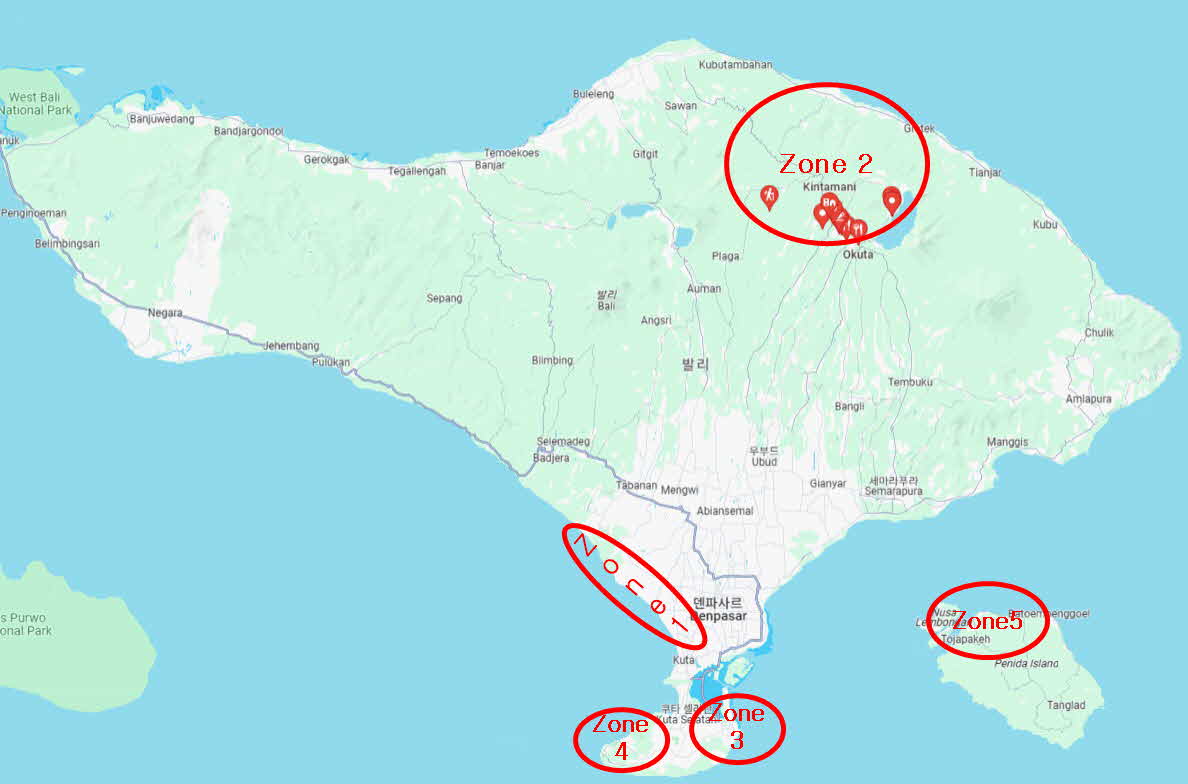1. Introduction to Bali


Bali, the Island of the Gods, continues to captivate travelers with its diverse landscapes, vibrant culture, and affordable luxury. Nestled just 7 hours away from Korea, Bali has become a global hotspot for tourists from various corners of the world. In this travel guide, we’ll explore the unique charm of Bali, detailing its regions, attractions, and providing essential tips for a memorable vacation.
2. Explore Bali’s Diverse Regions
and Attractions

Zone 1 – Jinbalhan,Kota,
Seminyak, Canggu
Surfing and City Vibes


– Famous for strong waves, perfect for surfing enthusiasts.
– Jinbalhan Kota offers a bustling atmosphere with shopping malls and restaurants.
– Jimbara Beach is a highlight, known for its barbecues and surfing lessons.
Zone 2 – Ubud and Kitamani
Nature’s Haven
– Ubud provides a jungle charm with terraced rice fields, wide expanses, and waterfalls.
– Perfect for adventure seekers with activities like rafting and hiking.
– Kitamani offers a stunning view of Baturu volcano and lake.
Zone 3 – East Busan and Nusaduwa
Family-Friendly Luxury
– Conveniently close to the airport with large luxury hotels and resorts.
– A representative area for Southeast Asian resorts with wide beaches and diverse leisure activities.
Zone 4 – South Uluwatu
Cliffside Serenity
– Famous for cliffs and strong waves, making it a haven for honeymooners and relaxation seekers.
– Spectacular views add to the private and serene atmosphere.
Zone 5 – Nosapanda Laembonghan
Ceninghan Island
Island Escape
– A neighboring island just 30 minutes away by speedboat, offering a different nature experience.
– Magnificent landscapes and the opportunity to spot giant manta rays.
– Ideal for day tours or an extended stay to enjoy various activities.
3. Travel Tips for
a Seamless Adventure

1. Long-Distance Transfers and Island Transfers
– Use private taxis for specific or long-distance travels.
– Booking in advance is recommended for convenience.
2. Transportation Within the Area
– Utilize taxi apps like Grab or Go-Jek for local transportation.
– Be cautious about renting a motorcycle without a proper license.
3. Using Cards and Cash
– Cards are widely accepted, but some places may charge a 3% fee.
– Carry cash, especially in smaller establishments.
4. Travel Wallet Service
– Consider using Travel Wallet for convenient money management.
– Linked to your bank account, it allows instant currency exchange and offers a Visa check card for local payments and ATM withdrawals.
5. Currency Units and Calculations
– Handle the Indonesian rupiah with care due to its numerous zeros.
– Organize it in your wallet by currency unit for easy access.
6. Consumption and Food Prices
– On average, a meal with two or three menu items and two beers costs around 200,000 rupiah ($13).
– Local eateries offer affordable options, while imported items may be pricier.
7. Cell Phone Data and SIM Selection
– Opt for a login SIM card or e-SIM for seamless connectivity.
– These SIM cards can be used with overseas carrier plans without requiring physical replacement.
4. Visa and Customs Declaration
(Please apply in advance before entering the country.)
– Save time by applying for a tourist visa online in advance.
The steps to apply for the Indonesian e-Visa are as follows:
1. Visit https://visa-online.imigrasi.go.id/
2. Register
– Enter data and upload required documents (individual/ corporation)
– Wait for the email notification which contains the username and password
3. Apply for Visa
– Log in using the username and password
– Select the type of visa you wish to apply for, enter data, and upload required documents
– Make PNBP payments (Make sure the data and documents are correct. If the application is rejected, the payment shall not be refunded)
– If the application is approved, a notification will be sent via email
– Online customs declaration with a QR code can streamline your entry process.
Indonesia travel basics
↓↓↓






